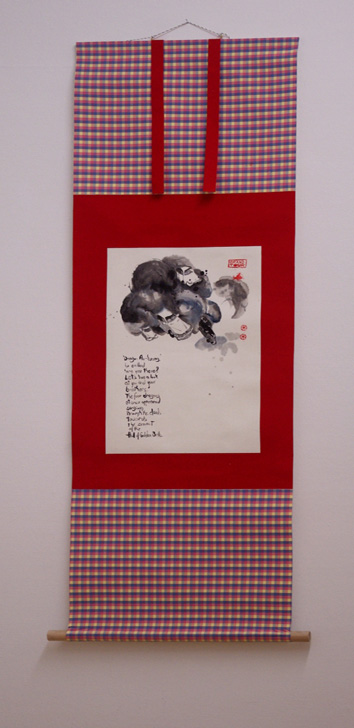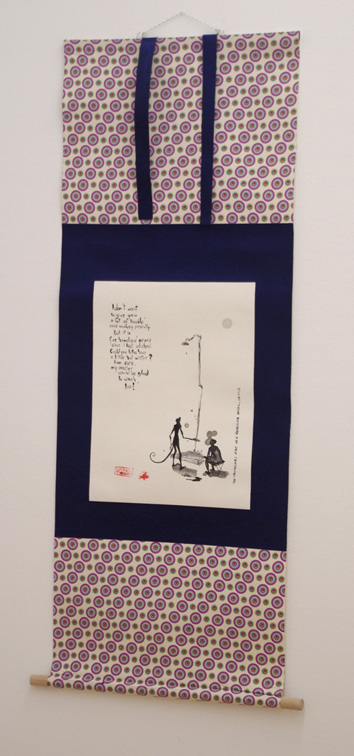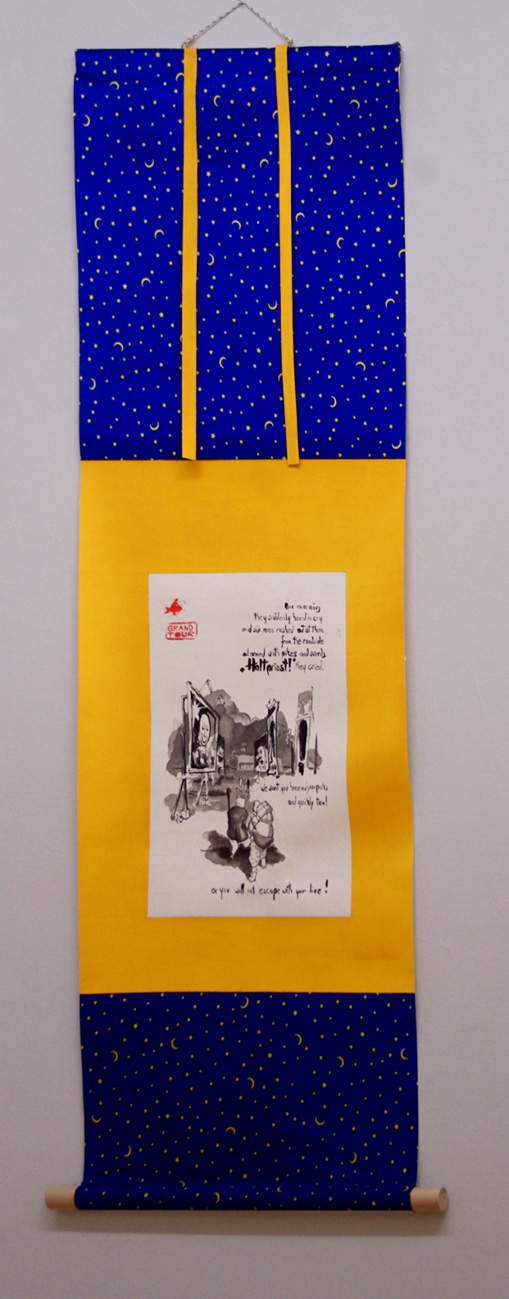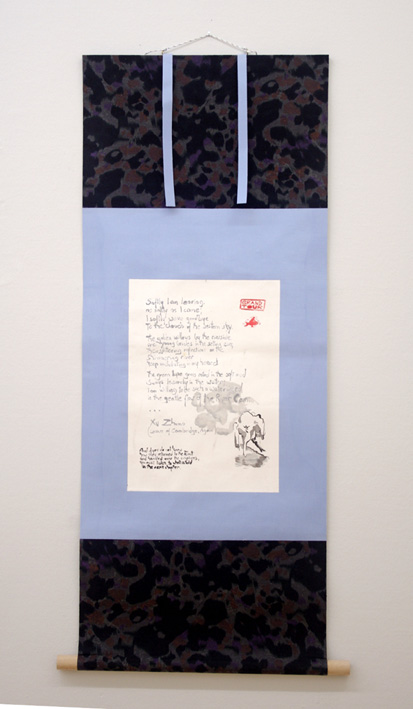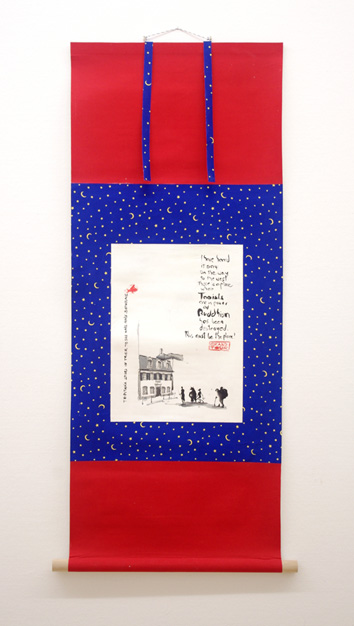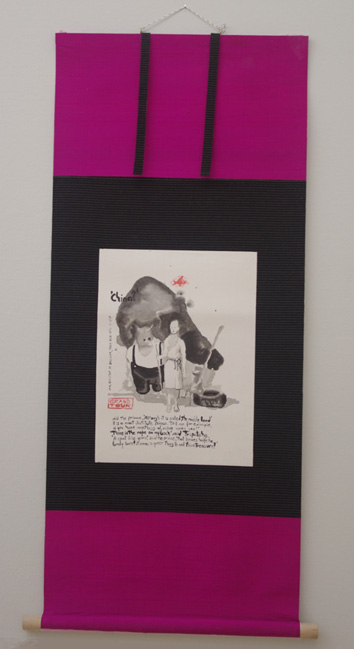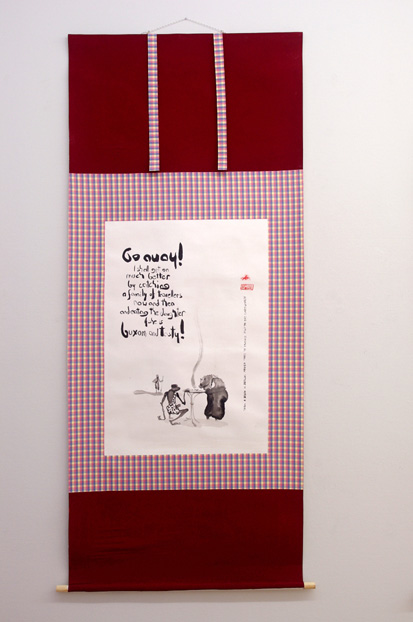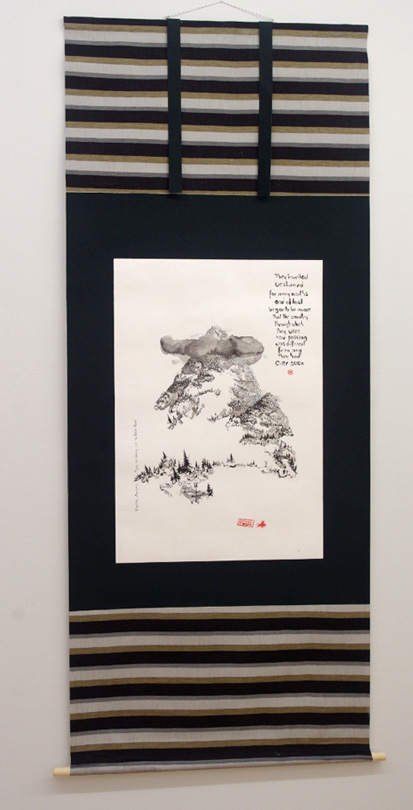Die
Reise nach Westen
14
Zeichnungen, Tusche, Stoff, 2013
Galerie
Ute Parduhn -- Pressemitteilung
China – Deutschland:
Aneignung oder Kopie?
Henrik Schrat dreht den Spieß um und erzählt eine Parabel.
Wie ist das mit der Aneignung fremder Kultur – wann wird gelernt,
wann kopiert und gibt es so etwas wie Authentizität überhaupt?
'Die Reise nach Westen’ heißt Schrats neue Serie von Arbeiten,
die als chinesische Tuschzeichnungen daherkommen, die auf Stoffe aufgezogen
sind und als Rolle in traditionellem chinesischen Format an der Wand hängen.
Nach einer Reise in China war dem Künstler aufgefallen, dass in China
allerorten Ölmalerei betrieben wird, aber hier keiner ernsthaft auf
die Idee käme, chinesische Tuschmalerei zu unterrichten. Ein guter
Anfang, um über Aneignung und kulturelle Lernfähigkeit nachzudenken.
Schrats Arbeiten erzählen einen berühmten traditionellen Roman
Chinas neu, der tatsächlich den Titel ‚Die Reise nach Westen
trägt’ (Wu Cheng’en, ca 1590). Das Buch enthält
die Geschichte eines anderen Wissensimportes: im 7 Jh reiste ein chinesischer
Mönch nach Indien, um buddhistische Schriftrollen nach China zu bringen.
In Schrats Arbeiten reist dieser Mönch und seine Begleiter jedoch
durchs zeitgenössische Europa und besucht Orte, die viele seiner
heutigen Landsleute besuchen. Paris, Berlin ein Hotel mit tropfender Dusche
aber auch Metzingen, Trier und den Mount Titlis. Warum diese Orte? La
Grande Tour: Die haben alle eine Geschichte...
Auf den Zeichnungen gibt es Text, wie auf traditionellen chinesischen
Tuscharbeiten üblich. Die Zitate sind jedoch in Englisch, entstammen
Wu Cheng’en’s Roman und schlagen eine Brücke ins Jetzt.
An der Aneignung hat Schrat gearbeitet, an der Technik der Tuschzeichnung
und sich am Herstellen traditioneller Bildrollen abgearbeitet. Was
bis hin zum den roten Siegeln auf dem Blatt aussieht wie traditionelles
China, sind typische Arbeiten von Henrik Schrat, narrativ und doppelbödig.
Und sie stellen den Kontakt her, zwischen dem was die Arbeiten selbst
sind, und dem wovon sie erzählen.
The
Journey to the West
14 Drawings, ink, fabric,
2013
How is it with the adaption of other cultures – what is learning,
what is appropriation and what is copying?
Does a thing like authenticity exist at all?
‘The Journey to the West’ is Schrats new
series of works, which look like Chinese ink-drawings, mounted on fabrik.
They hang on the wall as traditional Chinese hanging scroll. After an
exhibition in China the artist noticed, that in China oil painting is
very common, tought as a western image technique. But nowhere in Europe
Chinese ink drawing is really thought in the context of contemporary art.
A good starting point to think about how cultures learn and appropriate.
Schrats work tells the famous tradtional Chinese novel again, which has
indeed the title ‘A Journey to the West’ (by Wu Cheng’en,
ca 1590). The book contains the story of another import of knowledge.
In the 7th century a Chinese Monk went to India, to bring home the Buddhist
scrolls. In Schrats drawings the Monk and his three followers through
contemporary Europe and visit places Chinese travellers would visit today.
There is Paris, Berlin , a hotel with a leaking shower but also places
like Metzingen, Trier and the Mount Titlis. Why this places? La Grande
Tour: They all have their special story...
On the drawings is text, as is the case in traditional Chinese drawings
– and in comics today, which is one of Schrats roots. The quotes
on the works are in English, and the are taken from Wu Cheng’ens
novel, bridging the time, confronting alike situations than and now. Henrik
Schrat has appropriated the ink drawing technique and has worked hard
to try out the production of traditional hanging scrolls.
From format till the red seals it looks like traditional China, but they
are typical works by Henrik Schrat, narrative and ambiguous. They call
again on a traditional craft and bring in contact what the works talk
about with what they actually are.
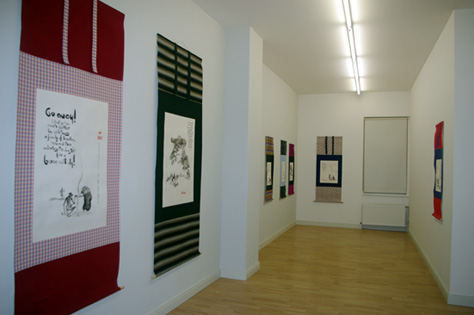
at Galerie Parduhn, Duesseldorf/Germany
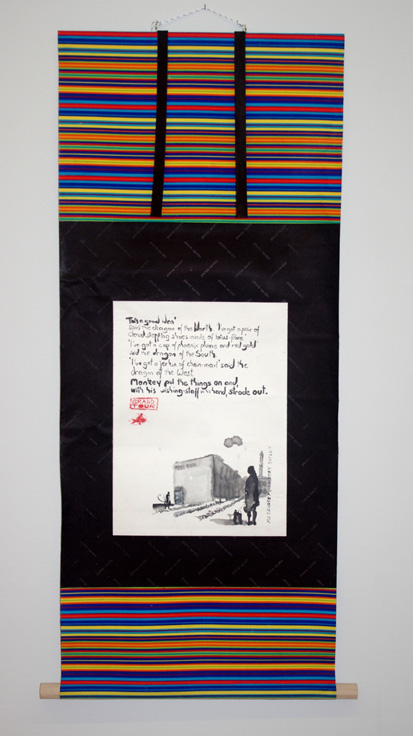
ca. 120 x 53 cm
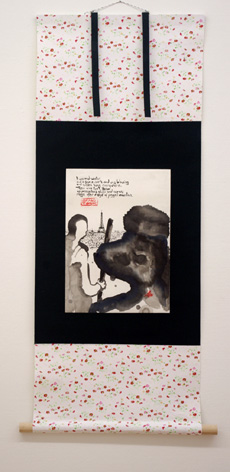
ca. 120 x 53 cm
ca. 250 x 100 cm
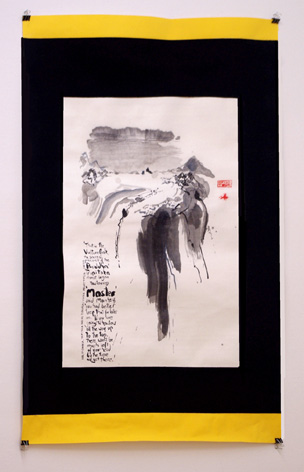
130 x 100 cm
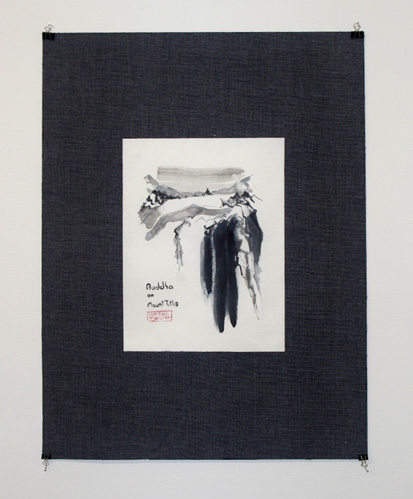
ca. 100 x 70 cm
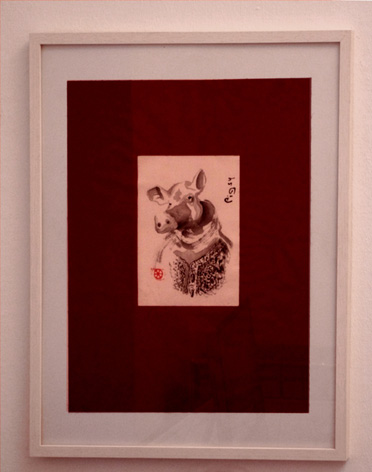
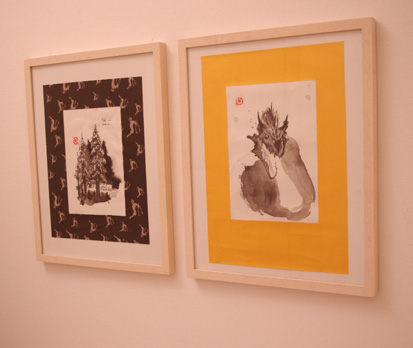
Pigsy, Aldi im Waldi, Dragon; je 35 x 45 cm
